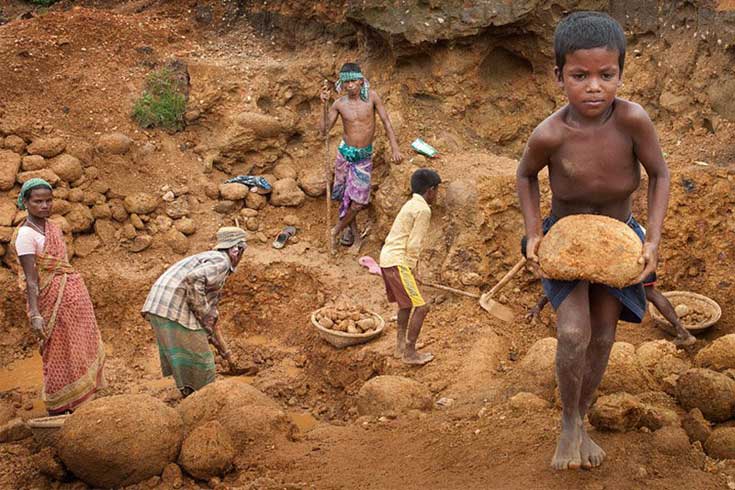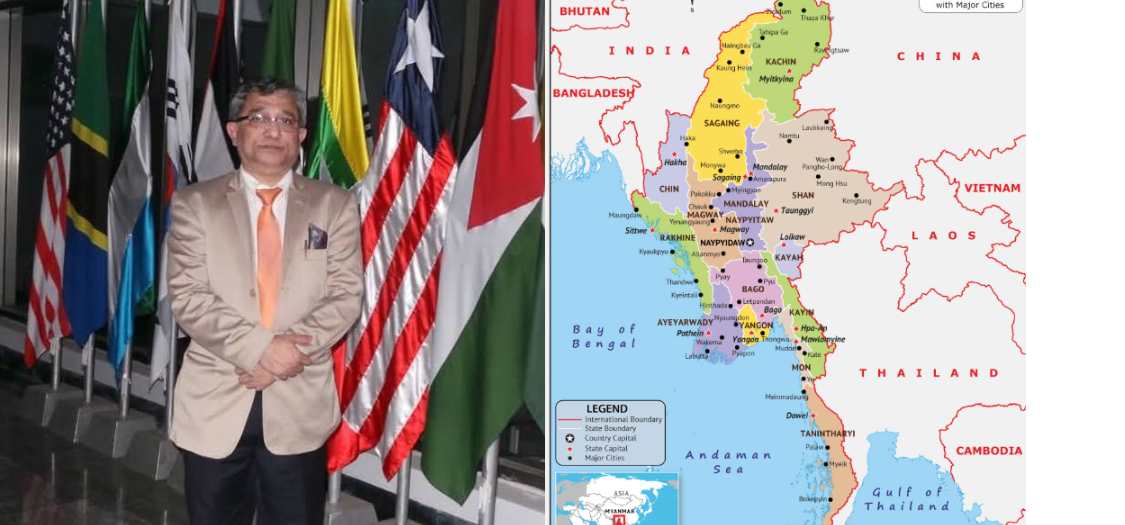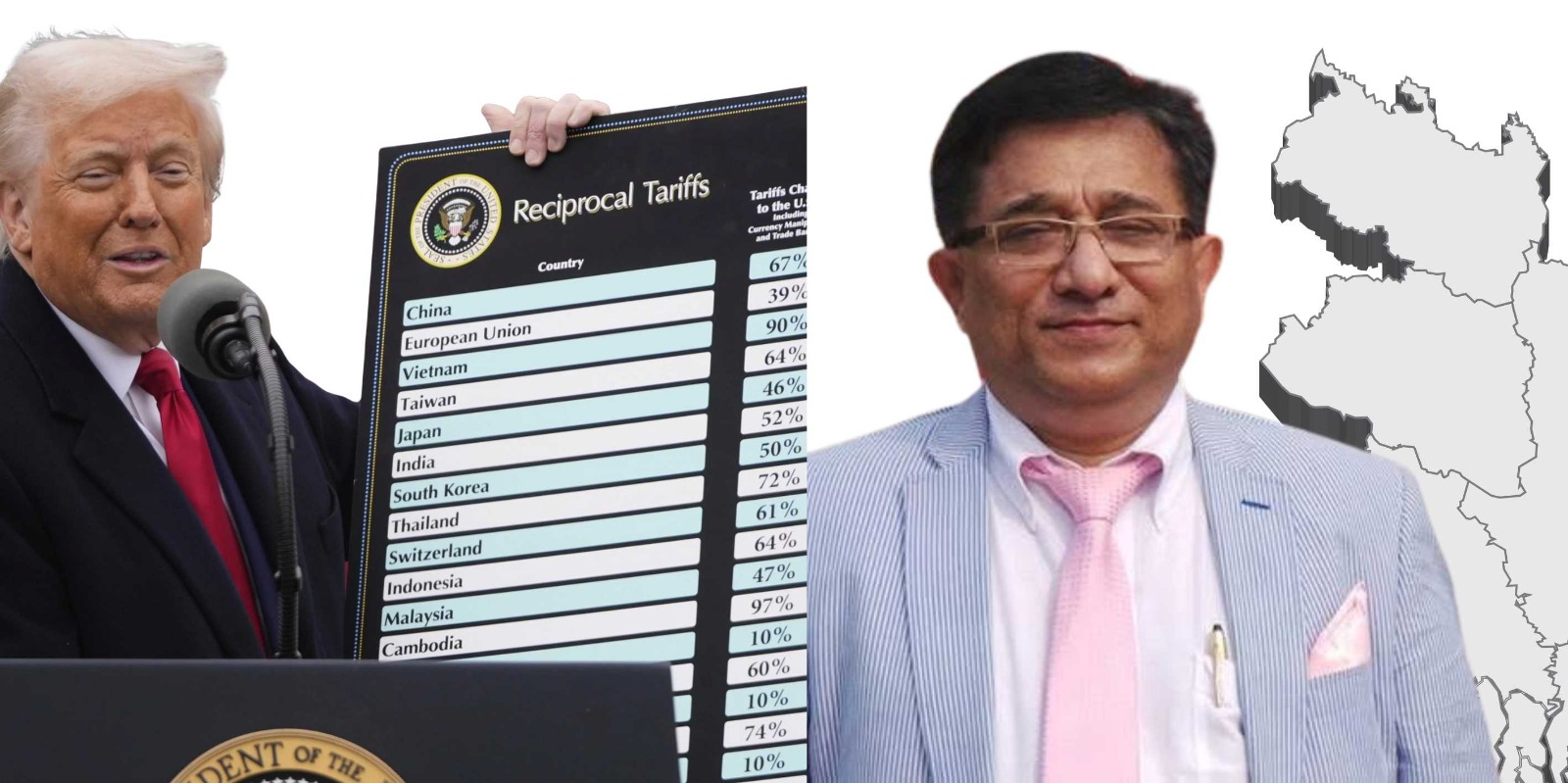Md. Emdad Ullah:
Anwar Hossain. Age nine. Works as a water boy in a hotel. At this age, he was supposed to be in a school-madrasa for his education, but poverty had taken him to a hotel! Again, his father, Altaf Hossain, is no longer alive. His mother, Ankurer Nesha, works in someone else's house. Although his home is in Kurigram district, he has come to Chandishkara village in Chauddagram Bazar area in search of a livelihood. Here, Ankurer Nesha and her son Anwar Hossain live in a rented tin shed house.
Sifat Mia. Age twelve. Works as a car 'repairer' in a garage in the Miabazar area. His mother is no longer alive. Father Moslem Mia has married another woman. Stepmother Zohra Khatun does not take care of him. He works in the garage and gets a salary of three thousand taka per month. He gives that money back to his stepmother.
Millions of children like Anwar Hossain and Sifat Mia are deprived of education due to poverty. From small factories to stone quarrying, ferrying, begging, house-to-house work, garment factories, garages, shops, hotels, and restaurants etc., children are used as laborers. But childhood means joy, dreams, and horizons of possibilities. When that childhood is broken by risky work in brick kilns, factories, or harmful environments, it is not only a shame for a nation, but also a big threat to the future. Child labor has become a serious problem in many countries of the world, including Bangladesh. Children trapped in the cycle of poverty, illiteracy, and social ignorance lose their childhood. Millions of children spend an important part of their lives in hard labor. From household work to construction, brick kilns, agriculture, or factories, the presence of child labor is increasing. Poverty of parents, lack of educational opportunities, and unstable economic conditions push children into labor.
It is known that children are the future of the nation. Just as the red color is hidden in the chest of henna leaves, so too is a nation with countless potential hidden in the hearts of children. But it is extremely difficult to imagine the future for a child who withers, falls off, and cannot blossom into a flower. If these children had not been involved in labor in this way and had received the light of education in a prosperous world, then they would certainly have been able to take charge of the future, and the nation would have received a bright address of hope from them. According to the UN Convention on the Rights of the Child and the Constitution of Bangladesh, all Bangladeshi persons under the age of 18 are considered children. According to the Bangladesh National Labor Act 2006, if children under the age of 14 are made to work, it will be considered child labor. According to the United Nations, child labor has increased significantly during the COVID-19 pandemic. According to a report jointly published by the United Nations International Labor Organization and UNICEF, 70 percent of children engaged in child labor are engaged in the agricultural sector, while the rest 20 percent are engaged in the service sector, and 10 percent are engaged in the industrial sector. Child labor is increasing day by day due to the lack of proper enforcement of the law. Some selfish factory owners, in order to hire workers at low wages, employ young teenagers for low wages. Many people suffer serious injuries and even die in accidents while doing risky work.
The main cause of child labor is poverty. In a poor family, children are often considered a source of additional income. Parents send them to work instead of sending them to school. In addition, illiteracy and lack of awareness play a major role. Several laws have been enacted in Bangladesh to stop child labor. For example, according to the Bangladesh Labor Act, it is prohibited for children under the age of 14 to work. However, there are challenges in implementing these laws. Weaknesses in the implementation of the law, lack of adequate supervision, and lack of social awareness are hindering the effectiveness of the laws. Many times, families affected by child labor are also outside the government's assistance projects. Social protection programs designed to alleviate poverty do not always reach them. Moreover, rapid urbanization and migration from villages to cities have added new dimensions to child labor.
To get rid of the curse of child labor, a collective effort is needed from every section of society. Families, schools, governments, and international organizations must work together. Building a society free of child labor means securing the future of a nation. It is our moral responsibility to ensure educational opportunities, a safe childhood, and normal development for them. If we all work together, one day child labor will become a chapter of the past. In anticipation of that day, we need to further strengthen our current initiatives.
According to a UNICEF report, the number of child laborers is highest in developing countries. This labor disrupts the physical and mental growth of children. Although the ban on child labor has been repeatedly announced, there is practically no resistance to this sad reality. The number of child laborers in the country is increasing day by day. We must take great initiatives to end child labor.
The main reasons that can be identified behind the involvement of children in this inhuman labor are lack, poverty, false temptation, vagrancy, etc. On the other hand, the uncontrolled growth of population and lack of education also contribute to the sale of child labor. The sad picture of child labor is easily visible in every corner of the country.
A statistic shows that only 1 percent of mobile children are educated. Their families do not give much encouragement or feel the need for education. According to them, there is no need to teach education where earning a living is the main thing.
Due to being engaged in various labor, children have to be separated from their families for the whole day or for a long time. They can never enjoy various social benefits. As a result, a deep sense of despair is created in their minds. Due to the pronounced social isolation, a large part of children and adolescents become prone to crime. Therefore, many of them fall into greed at a young age and are damaged in various ways, take various drugs or intoxicants, and enter the hateful world of crime.
Child labor is a very shameful picture in the current civilized world. Children must be protected from this terrible curse. We all have to move forward with resolute, humane steps by establishing our just rights. We must save them from an uncertain future. Although it is very difficult to hope for the end of child labor in a developing country like ours, effective and practical steps must be taken to prevent it. Otherwise, this child labor will spread more widely around us like an infectious disease - there is no doubt about it.
Recently, Professor Kazi Sheikh Farid of Bangladesh Agricultural University has conducted research on various issues, including child labor. He said, "Due to poverty in our country, children are participating in various activities to support their families. Lack of awareness about education is one of the reasons for this. If this continues, the country will not progress. The world is sleeping on the issue of child labor. Everyone should play a responsible role in this regard. The government of any country should provide compulsory education to every child. Take action against families that employ children. This will reduce child labor."
MI











